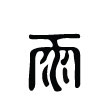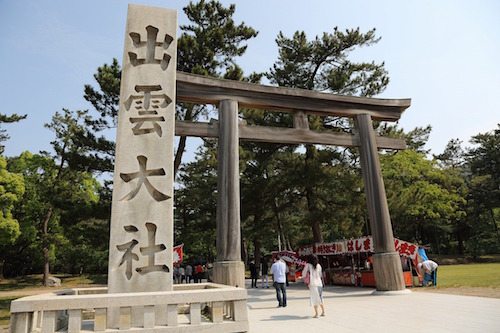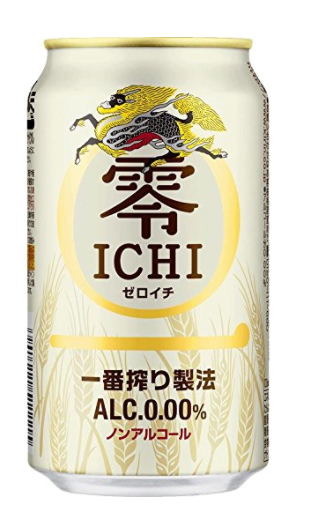173. The “Rain” Radical: 雨
In most respects, the eight-stroke "rain" radical 雨 is as straightforward as rain itself.
Just as we can read the autonomous 雨 kanji as あめ, we can read the 雨 radical as あめ. At least that's true in one very familiar kanji:
雨 (3: rain)
In the other 12 Joyo kanji in which this radical is on duty, the rain rises to the top. (Okay, that's not straightforward. It's pretty counterintuitive, come to think of it!) Here are some examples:
雪 (157: snow)
霜 (1529: frost)
霧 (1845: fog; mist)
In all these cases, we can call the radical あめかんむり (雨冠), where かんむり (冠) means "crown."
In English, the only name for this radical is "rain." See? That's straightforward!
The Etymology of 雨
Here's an old image (the LST seal–script version) of 雨, courtesy of Richard Sears:
 .
.
Henshall's etymology of this character is much more complicated than I anticipated. The four dots at the heart of this character represent "raindrops" falling from "clouds" (巾) beneath a symbol of the "heavens" (一), he says, adding that some scholars feel that 冂 alone is "cloud" and that the 丨 symbolizes "falling."
When Kanji Containing 雨 Relate to Precipitation
All the kanji I've mentioned so far have direct connections to precipitation. In fact, out of the 13 kanji with an on-duty 雨 radical, a whopping 8 still have something to do with weather conditions. That's quite unusual in the kanji world, where meanings tend to evolve over the millennia until certain shapes are almost irrelevant.
Here are a few etymologies in which the rain matters:
雲 (78: cloud)
The 云 once stood alone to represent "billowing vapors" but came to mean "to speak," says Henshall. The ancient Chinese added 雨 on top to emphasize "cloud."
雷 (1888: thunder; lightning)
Henshall doesn't say much about the 雨 in 雷 in his newer edition, but Kanjigen does. That source tells us that the ancient Chinese originally wrote the character as 靁, which consisted of 雨 ("rain") + the phonetic 畾 (a pictograph of "things piled up and lying about all over the place"). The top-heavy 靁 represented "the yin and yang atmosphere piled up in a rain cloud, producing thunderous sounds." Wow!
露 (1935: dew; to expose; open; Russia)
The radical means "rain," says Henshall in his newer edition. The 路 (usually "road") on the bottom acts phonetically to express "condense." Together the two halves yield "weather element that condenses," a reference to rainlike dew.

Photo Credit: Kayoko Kurimoto
Photo courtesy of Tiara Marina
This is the woman who designs every essay PDF for Joy o' Kanji! Tiara is standing in front of the famous 雷門 (かみなりもん: "Thunder Gate") at an entrance to 浅草寺 (せんそうじ), a temple in the Asakusa section of Tokyo. Actually, 雷門 is the nickname. The official one is 風雷神門 (ふうらいじんもん), which again contains 雷 (thunder). The name 風雷神 (ふうらいじん) collectively refers to Fujin (風神, ふうじん: god of wind) and Raijin (雷神, らいじん: god of thunder). You can find out more about the gate on Wikipedia.
Where's the Weather?
When my husband and I moved to the San Francisco Bay Area in April 1991, one of the first things we did was visit the impressive Chinatown in San Francisco. We went to a restaurant where (strange as it seems now) we were seated with strangers at a round table for eight. All were tourists, and one had a strong New York accent, which she used to elongate her complaints. In particular, she lamented that California was supposed to have great weather, but all she had found so far was rain and fog. "Where's the weather?" she said. "I want to know, where's the weather?" My husband and I jokingly repeated that question for years.
The question is pertinent when it comes to several kanji with the on-duty 雨 radical, such as these:
電 (180: electricity)
需 (887: demand; needs)
震 (1444: to shake)
The connection to rain is far from obvious, given the contemporary definitions. Here are two more examples, along with Henshall etymologies that will help you find the weather:
零 (1922: zero; to spill; small)
According to Henshall in his newer edition, our main character may have once been written as 霝, which consisted of “rain” (雨) + three boxy “drops.” Thus, one interpretation is that 霝 meant “raindrops.” He also presents a competing theory in which the whole character represented an “incantation for rain.”
As for the 令 shape that replaced the bottom boxes, Henshall says that although 令 typically means “order, rule,” in this case it phonetically expressed either “to hang down” or “clear; something clear that drips down.” Either way, 零 meant “rain falls,” he says.
He calls “small” an extended sense of “raindrops” and says that “zero” may be a further extended sense.
霊 (1923: spirit, soul)
The top part of this character also once meant "raindrops" but had an extended meaning in this context of "falling or descending from heaven." The bottom half means "sorceress," "shamaness," and "temple maiden." Thus, 霊 originally referred to a "shamaness in a state of possession, ... with the gods/spirits having descended upon her from heaven. By association it came to refer to the spirits themselves." Wow, what an etymology!
By the way, if you're searching for the weather, you're in luck because I've found it concentrated here:
零露 (れいろ: dripping dew) to spill + dew
This word features two "rain" radicals! So there's the weather! Somehow I doubt that seeing 零露 would have been enough to keep that obnoxious woman from grousing!

If you want zero alcohol, 零ICHI is your beer. I mean, I guess it is. Do you really want nonalcoholic beer?! This is the nonalcoholic version of Kirin's Ichiban-Shibori beer. The 零 (zero) refers to zero alcohol. The ICHI (一) is short for Ichiban-Shibori (一番搾り, いちばんしぼり).
